2018 Mercedes-Benz S-class facelift India review, test drive
In addition to a host of cosmetic changes, the refreshed Mercedes flagship gets advanced driving aids and a brand-new engine.
Published on Mar 09, 2018 01:04:00 PM
34,669 Views
Follow us on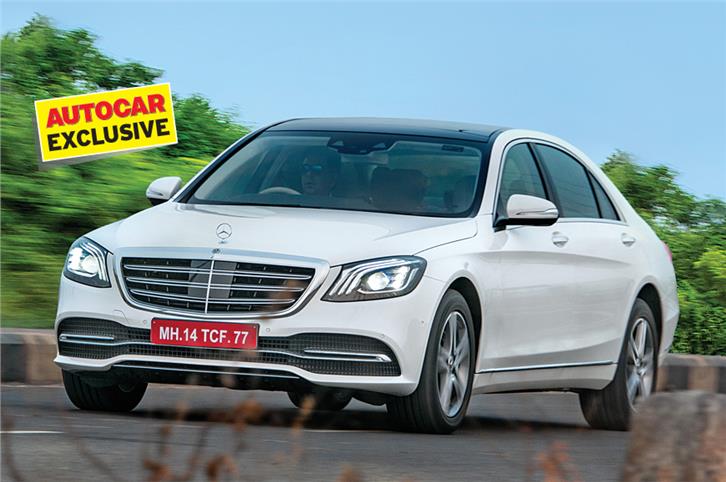

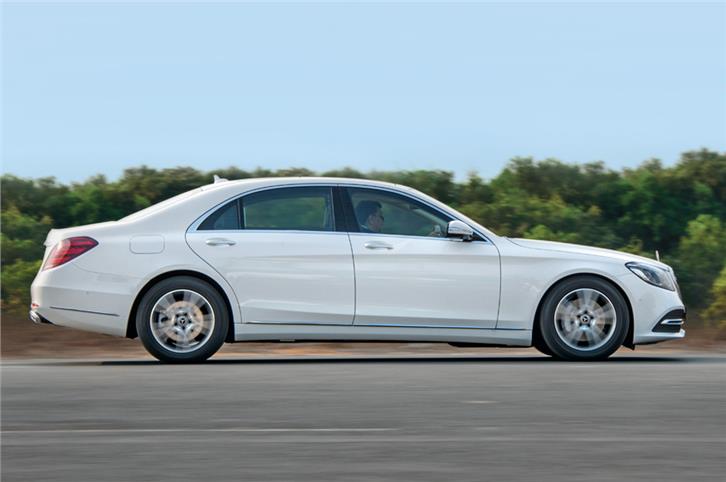
S-class feels solid, stable and composed on any road.
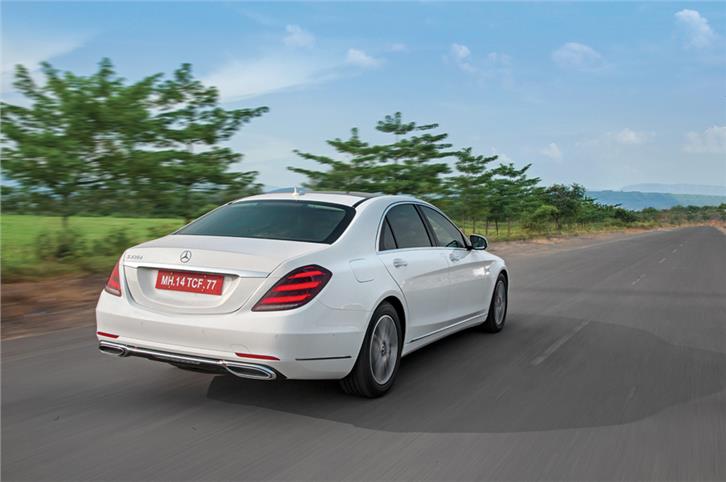
We Like
- Brilliant diesel engine
- Sets new emission standards
- Unparalleled comfort
We Don't Like
- Not very engaging to drive
- Doesn’t set the standard for ADAS
WHAT IS IT?
On the face of it, the facelifted Mercedes S-class is, well, just another facelift. It gets a typical mid-life cycle refresh with a new grille, bumpers and lights. Only the ‘soft’ parts have been changed and there are no alterations to the sheet metal or body, and this doesn’t help distinguish it greatly from its predecessor. But, like I first said, these tweaks are just on the face of it.
The changes under the bonnet, however, are monumental, because, with this facelifted S-class, Mercedes has introduced a brand-new, state-of-the-art diesel engine that brings along a string of industry firsts. Also, this is the first Mercedes in India to get some form of semi-autonomous tech with a suite of Advanced Driver Assistance Systems (ADAS). But before we dive into its heart, let’s get the cosmetic bits out of the way.
The one thing that immediately distinguishes the latest version of the S-class is the new headlight cluster. The single daylight running light (DRL) LED strip on the previous S-class is replaced by a distinctive cluster of three LED strips, which Mercedes calls the ‘Triple Torch’ design. It also gives hierarchy to the Mercedes range and establishes the S-class at the top with three light strips, while the E-class gets two and the C-class just one. And in case you’re wondering – no, Maybach versions don’t get four! The headlight unit, with its cluster of projector lamps, looks pretty high-tech, and Mercedes claims the main beam is powerful enough to light objects 650m away.
The grille gets subtle changes with new louvres and a high-gloss-black finish for the vertical strips. What you notice at once, though, is the blank panel at the centre of the grille; this serves as a shield for all the advanced driving aid sensors behind it.
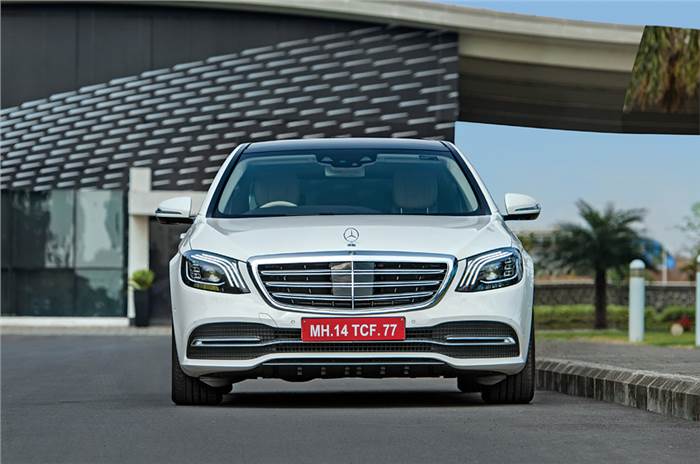
The lower section of the front bumper is all new and now gets larger air intakes for a sportier look, while the rear bumper has a chrome garnish that neatly links the twin exhausts. The tail-lamps have a brilliant crystal effect that genuinely stands out and offer a ‘coming home’ function where the lights fade from blue to white.
The long flanks of the new S-class are untouched, but what you get are a new set of five-spoke alloys that look sportier than before. But these 18-inch wheels, shod with relatively tall 245/50 R18 tyres, look too small and ordinary on a car this big and classy; it’s like wearing trekking boots with your Armani suit. The fact is, Mercedes can’t design alloys as well as BMW.
WHAT'S IT LIKE ON THE INSIDE?
You open the S-class’ hefty doors via an ordinary-looking key fob that feels quite low-tech next to the chunky key of a 7-series, which has a cool digital display and lets you remote park. What gives owners their bragging rights, however, is the key’s white finish, which is exclusive to the S-class. The rest of the Merc range gets black keys.
There are no major changes to the interior, so what you get is a traditional design which isn’t as modern as the 7-series or as high-tech as the new A8. But, the S-class’ cabin still has a special old-world charm to it, with retro-looking circular vents, lots of chrome bits and wood finishes. However, the infotainment system has been completely modernised. The two huge 12.3-inch displays with stunningly sharp and clear graphics have been integrated into a one-piece glass panel and offer a myriad of customisable display options which you will never tire of playing with. You also get Apple CarPlay and Android Auto (a first on the S-class) to interface with your smartphone. Your phone can be charged wirelessly in the front and the back. However, this only works with high-end phones which have wireless charging capability.

The steering wheel, wrapped in Nappa leather, is all new and a bit too overloaded with buttons. All the ADAS functions, as well cruise control (there’s no stalk behind the wheel), have moved onto the wheel but are easy to operate via slick buttons and a touchpad. Mercedes has gone to town with the ambient lighting and you get 64 colours to play around with!
The back seat remains the place to be in the S-class. The seats still offer unparalleled comfort in this class; they are perfectly cushioned, they electrically recline and have a retractable footrest. You feel like you’re in business class in a jet.
WHAT'S IT LIKE TO DRIVE?
The facelifted S-class gets a brand-new diesel engine – a 2,987cc diesel in the S 350d - and a revised 2,996cc petrol in the S 450. The diesel remarkably meets BS-VI emission standards on BS-IV fuel. That Mercedes could achieve this with a diesel (it’s easier to upgrade to the new norms with a petrol motor) is a great engineering breakthrough and a story in itself.
The car we are driving is the S 350d which gets the latest generation OM656 diesel engine. It comes with lots of tech to reduce friction and improve efficiency, like ‘stepped bowl’ pistons and a low-friction ‘Nanoslide’ coating on the cylinder walls. It also gets the latest common rail injection system with injection pressure at an unparalleled 2,500bar.
The big news is that, with this engine, Mercedes has, after over 20 years, ditched the V6 layout and gone back to an in-line configuration for six cylinders. V6 engines traditionally make for better packaging, which is why it is the predominantly used layout for six-cylinder engines. But, ironically, it’s the inline-six that’s making a comeback for partly the same reason. Because an in-line configuration is narrower than a vee, it frees up lots of space on the sides to package hardware for electrification and exhaust after-treatment needed to meet the ever-tightening emission standards. In fact, the S 350d comes with a much bigger catalytic converter, a diesel particulate filter and a Selective Catalytic Converter (SCR) with an Adblue dosing tank.
But how does the new engine perform? In a word, it’s absolutely brilliant and it surpasses the lofty standards set by the older OM646 3.0-litre diesel V6. The new engine produces a class-leading 286hp which is a good 28hp more than the previous motor. It’s mated to an all-new nine-speed automatic gearbox that ditches a torque converter drive for a multi-clutch pack for better response. And responsive it truly is; there is hardly any turbo lag and the big S-class gathers pace in a measured but extremely brisk way. In fact, it’s shockingly quick for a diesel, and we didn’t need our timing gear to tell us that it was distinctly faster than the older car. But we just had to strap on our VBox to know exactly by how much. The dash to 100kph comes up in 6.8sec, which is over a second faster than the older car. It wafts to 140kph in just 14.64sec, and leaves the previous S-class trailing behind by over 2sec.
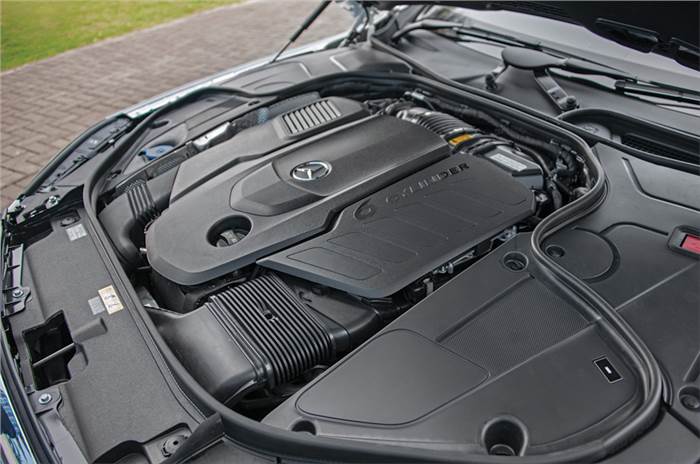
We didn’t test the new S 350d on our testing strip, so the figures aren’t quite final, but they do give an indication of the S-class’ astonishing pace. Gearshifts are seamless and the gearbox kicks down without any hesitation.
It’s supremely quiet for a diesel too, more so than the previous S 350d, if that were possible. Where you could hear a diesel rumble from the old V6 when you revved it hard, the new engine is distinctly more silent, especially under load, and sets a new benchmark for refinement. In fact, the OM656 has simply blown us away, and it’s safe to say that this is the best 3.0-litre diesel on the market today.
With so much power and 600Nm of torque to play with, even the most resolute of back seat owners will be tempted to drive the new S-class, and why not? Though it’s nowhere near as engaging to drive as the 7-series, the steering feels quite slow and wooden, and, at 1,990kg, it isn’t very agile, it does offers driver appeal in a different way. It feels best driven in an unhurried manner and will suit someone who has a bad habit of driving with only one hand on the wheel; the ADAS and driver assistance features are intended for such lazy drivers. The most useful feature, especially on long highway drives, is Mercedes’ Distronic system – a kind of adaptive cruise control that checks the distance to the car in front by slowing down or even stopping if necessary. With no car in front, it maintains its selected speed. The S-class has an active steering, which again uses the car in front as a reference to keep you in your lane, even on slight bends. Quite frankly, on the unmarked roads in the industrial area of Chakan, the steering didn’t assist much and it’s nowhere near as effective as the electronic nannies on the new Volvos.
Other driver aids debuting on the S-class are active braking assist and active blind spot assist, which again are very useful, especially if you’re the kind who checks Facebook while driving. No doubt all these gizmos are welcome and can keep drivers out of trouble, but they don’t make the S-class the tech leader for ADAS. The far cheaper Volvo XC60 has all these driver assistance aids and more.

There are no changes to the suspension and we were a bit disappointed that Mercedes’ famed Magic Body Control – a unique innovation which uses a camera to scan the road ahead and setup the active suspension in advance to deal with bumps, potholes, and other imperfections – didn’t make it to the facelift. However, the all-conquering ride is still magical. The suspension goes over potholes, ruts, and bumps as if they didn’t exist. You glide over the road in sublime comfort, and the best bit is that the suppleness doesn’t come at the expense of body control. Except in the softest Eco and Comfort settings, it doesn’t bounce or float, and there’s surprisingly little body roll for a car so big.
SHOULD I BUY ONE?
The S-class facelift then is more than just a facelift. It moves a big step up, thanks largely to the all-new diesel engine which sets a new standard for performance, refinement and emissions. It’s much nicer to drive now and the ADAS system makes it even more stress-free from behind the wheel. But most owners will eventually want to slip into the rear seat; the S-class’ traditional strengths like the high-quality cabin, pillowy ride, and soothing ambience are hard to beat. This is still the car that defines the luxury segment.
Mercedes has priced the S 350d at Rs 1.33 crore, while the S 450 costs Rs 1.37 crore (ex-showroom, India).
Tech Specs 
Copyright (c) Autocar India. All rights reserved.


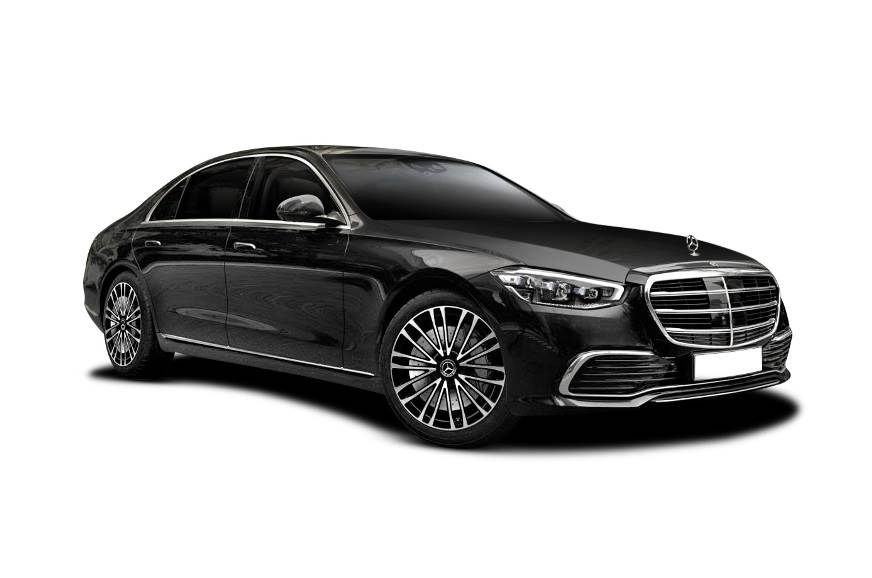
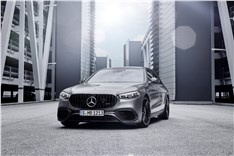
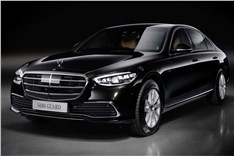


.jpg&w=234&h=156&q=90&c=1)
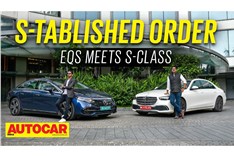
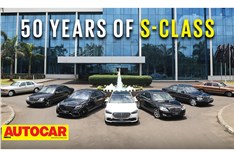



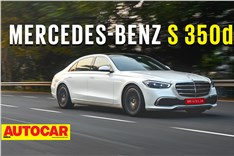
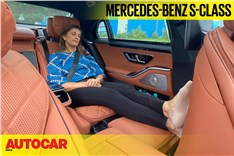

 Price
Price Engine
Engine Transmission
Transmission Efficiency
Efficiency Acceleration
Acceleration Body
Body Suspension
Suspension Steering
Steering Dimensions
Dimensions Interior
Interior Safety Features
Safety Features
Comments
Member Login
Personal Details
No comments yet. Be the first to comment.